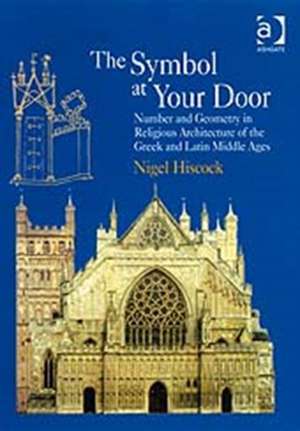The Symbol at Your Door: Number and Geometry in Religious Architecture of the Greek and Latin Middle Ages
Autor Nigel Hiscocken Limba Engleză Hardback – 21 dec 2007
Preț: 834.17 lei
Preț vechi: 1111.14 lei
-25% Nou
Puncte Express: 1251
Preț estimativ în valută:
159.64€ • 164.69$ • 135.11£
159.64€ • 164.69$ • 135.11£
Carte tipărită la comandă
Livrare economică 04-18 martie
Preluare comenzi: 021 569.72.76
Specificații
ISBN-13: 9780754663003
ISBN-10: 0754663000
Pagini: 441
Dimensiuni: 174 x 246 x 34 mm
Greutate: 1.25 kg
Ediția:1
Editura: Taylor & Francis
Colecția Routledge
Locul publicării:Oxford, United Kingdom
ISBN-10: 0754663000
Pagini: 441
Dimensiuni: 174 x 246 x 34 mm
Greutate: 1.25 kg
Ediția:1
Editura: Taylor & Francis
Colecția Routledge
Locul publicării:Oxford, United Kingdom
Cuprins
Contents: Prologue; The sphere and the cube; Temple and body; Ad triangulum; Ad quadratum; The architectural geometry of the pentagon; 'The whole frame of the universe'; Epilogue; Bibliography; Index.
Notă biografică
Nigel Hiscock was a principal lecturer in Architecture at Oxford Brookes University until his retirement, and is now a Visiting Research Fellow there; he is also an architect. His previous monograph is The Wise Master Builder, Platonic Geometry in Plans of Medieval Abbeys and Cathedrals, also published by Ashgate, which achieved considerable critical success. In addition, he is the editor of The White Mantle of Churches, Architecture, Liturgy and Art around the Millennium, and has published a series of articles on medieval architecture and design.
Recenzii
’Drawing on medieval sources, Hiscock constructs a good case regarding architectural symbolism and its significance, and summarises Christian Platonism's interpretations of numerology and geometry... It is a brave book, with an impressive list of references.’ The Architectural Review ’This well researched book provides a great deal of textual evidence in quotes, plentiful references in endnotes, and with numerous drawings, plans, diagrams, sketches, and photographs. It is well written and interesting.’ Architectural Science Review 'The ambition of Hiscock’s task is to be applauded, and The Symbol at Your Door brings to light a number of sites where he has established the likelihood of an intentional symbolic meaning via documentation, analysis of design particularities, and the discovery of consistency between design and function... Hiscock’s examples are convincing enough that the question of symbolic numerical meaning should at least be raised when evaluating motivations for medieval architectural designs.' Caa.reviews
Descriere
Is the display of number and geometry in medieval religious architecture evidence of intended symbolism? This book offers a new perspective in the retrieval of meaning from architecture in the Greek East and the Latin West, and challenges the view that the presence of number and geometry was merely an outcome of practical procedures by masons. Instead, it attributes intellectual meaning to it as understood by Christian Platonist thought and provides compelling evidence that the symbolism was often intended.












